Copy link to clipboard
Copied
Hello. I desperately need help. I did a pic heavy catalog(for printing, so most pics are in CMYK) in indesign which is arond 96 pages. I didnt embed any image or something, everything is linked.
So first problem is, that at some point my indesign file became 2 gigs of weight. It cant be possible.
Second problem is that, no matter how I scale down images in indesign export pdf process, exported pdf weights 2 gigs too. \
My collegue previously made similar catalog 100 pages, and it weights 100 megs. What could be wrong?
 1 Correct answer
1 Correct answer
Hm, if there would be a script which converts images to 100% effective size, I would think that's okay. But i have around 500 images, so I can't possibly convert all of them! It would take so much time and effort..
There are multiple scripts for this task, it is a common enough problem that folks have looked for a solution (this involves scripting both InDesign and Photoshop).
Copy link to clipboard
Copied
The fact that these are CMYK eliminates that they’re coming straight out of a camera. The metadata shouldn’t be adding enough to blow up a file to 2GB, though.
Copy link to clipboard
Copied
You are right the 10 fold increase makes it seem like an accumulative problem, which is typically solved with a Save As to a new ID file. I usually do it with a straight Save As, so I'm wondering if going directly to an IDML is keeping some of the accumulated garbage.
Also, converting to CMYK wouldn't delete the metadata—I think metadata could exacerbate the accumulation problem.
If the files are linked there is virtually no difference in the InDesign file size.
How the files are saved does have some affect on the ID file size, but again not enough to explain 10X.
I think Bill is referring to the affect of the proxy's scale on ID file size. So here is a single page ID file with same pixel dimension placed image, but one is saved at 72ppi and scaled down to 10%; and the other is saved at 600ppi and left at 100%. The scaled version increases the file size 1.5X. That would be more noticeable if there were 100s of placed photos.

Copy link to clipboard
Copied
That is exactly what I meant, Rob.
Copy link to clipboard
Copied
You could also try saving the file as an IDML (File > Save As and choose IDML as the Format). Then just reopen the iDML in InDesign.
This could solve a lot of issues with Indesign files that are getting corrupted. One sign of a corrupted file is an unexplainable large file size.
Copy link to clipboard
Copied
A little late to the party, Jeff.
Copy link to clipboard
Copied
this is my links panel: 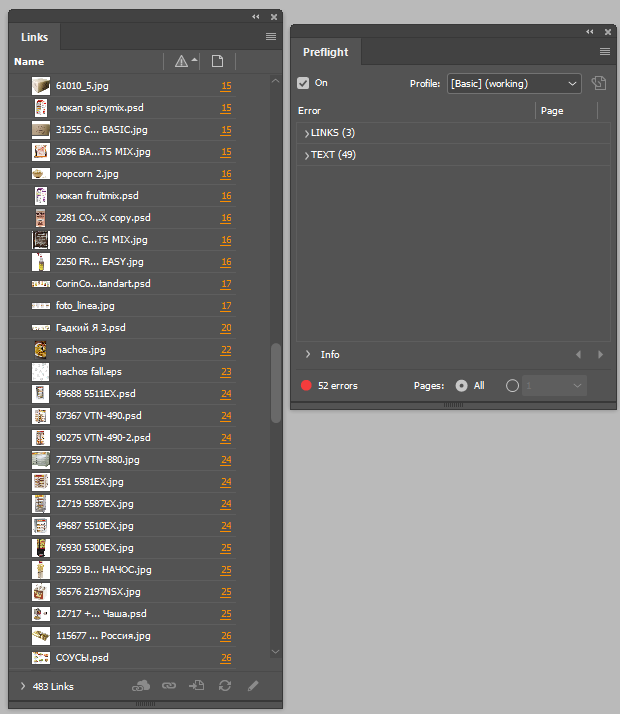
these are my pdf export settings: 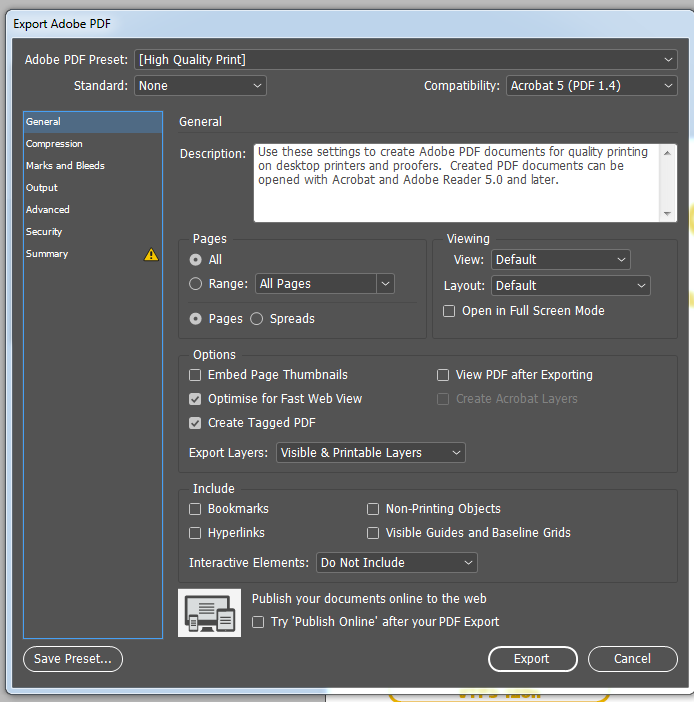

Copy link to clipboard
Copied
these are the files: 
as you can see idml is smaller
after that i exported out pdf using same setting, but set jpeg quality to medium, it turned out 750 megs, which is better! but too much anyway...
Copy link to clipboard
Copied
I found out how to export small pdf.. Previously i had "high quality pdf" preset, which turns off "flat transparency" option. after I changed it, and flattened transparency, my file became, 50 megs.
I am very happy about this.
But a problem with .idd file size remains..
Copy link to clipboard
Copied
Install into your InDesign scripts panel and you can have all of the link info including effective resolution exported into a spreadsheet for easy viewing:
https://github.com/jpobojewski/InDesign-Toolbox/blob/master/Export%20List%20of%20Graphics.jsx
Press the "raw" button and then copy, paste into a plain text editor or Adobe Extendscript Toolkit app and save as .js or jsx extension (not .txt).
It may also be a case that there is photoshop:DocumentAncestors metadata bloating the images and PDF:
Copy link to clipboard
Copied
Hm, if there would be a script which converts images to 100% effective size, I would think that's okay. But i have around 500 images, so I can't possibly convert all of them! It would take so much time and effort.. But I appreciate your answer Bill.
Copy link to clipboard
Copied
Yes. I agree that would be very tedious indeed especially assuming that the images are not all imported at the same size. But going forward I hope that the advice will be helpful for you.
Copy link to clipboard
Copied
But i have around 500 images, so I can't possibly convert all of them! It would take so much time and effort..
That's right you would have to give up InDesign's scaling, which there's no reason to do and would simply add work.
Just to clarify—in my #14 response to Bob, I was pointing out that the output dimension size of the initial proxy (the low res preview ID shows for placed images) and not the image's resolution can have some affect on the containing document's file size, but not much. So practically speaking Bob's #11 is correct—messing with the scale of linked files won't help your 10X file size problem.
Also, InDesign doesn't make any changes to the pixels of a placed image—when you scale, the size of the image's pixels are scaled with the image. Matching actual resolution to effective resolution has zero effect on output (unless you force a downsample on export) and you can test that with an export to PDF:
Here are two images with the same pixel dimensions, but different Actual resolution and scaling. The top scale is 100% the bottom scale is 10%
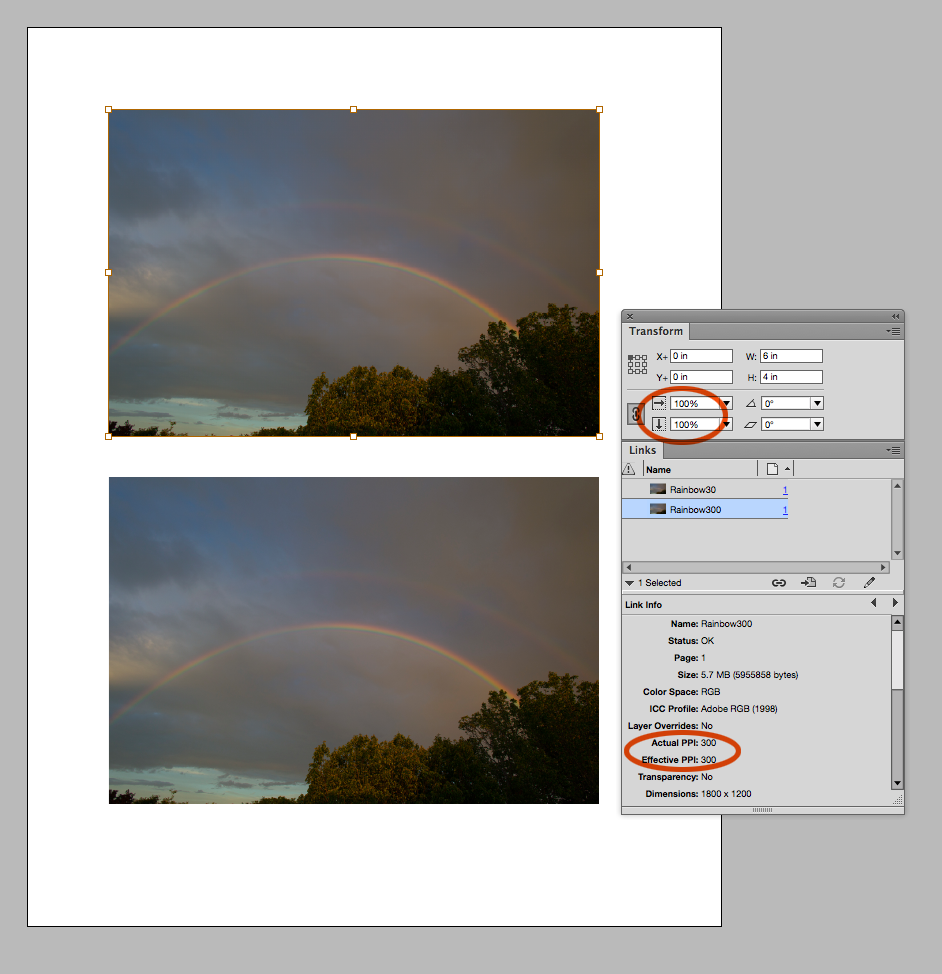
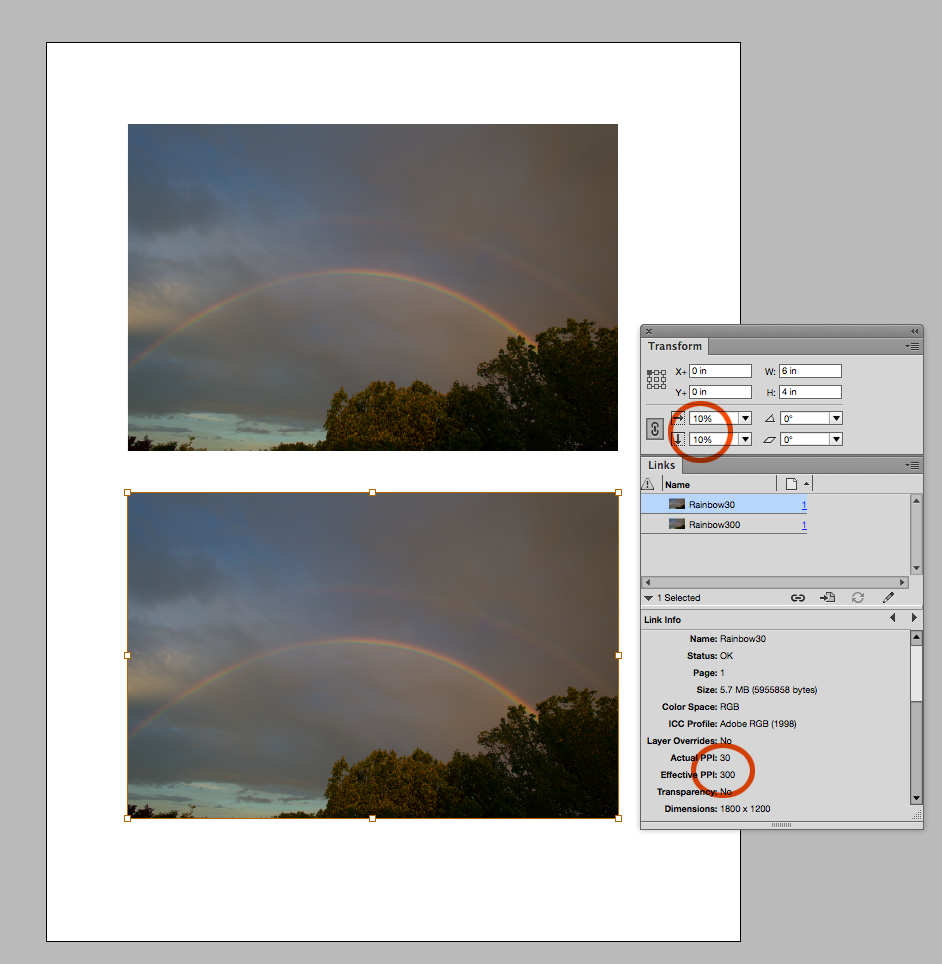
Exported to AcrobatPro via the PDF/X-4 preset, Object Inspector tells me the two objects are identical—Acrobat doesn't care about the InDesign scale:

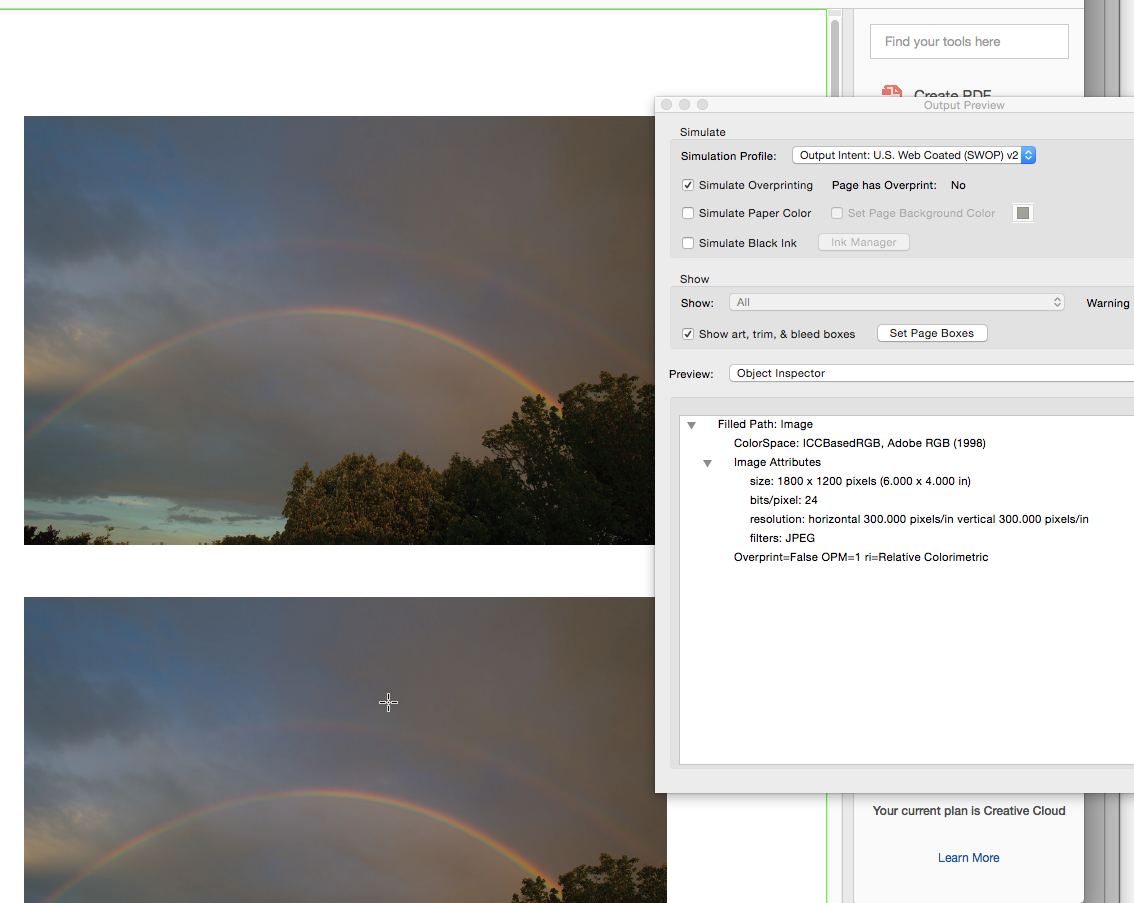
Copy link to clipboard
Copied
Hm, if there would be a script which converts images to 100% effective size, I would think that's okay. But i have around 500 images, so I can't possibly convert all of them! It would take so much time and effort..
There are multiple scripts for this task, it is a common enough problem that folks have looked for a solution (this involves scripting both InDesign and Photoshop).
Copy link to clipboard
Copied
10 or 15 years ago it may have been a problem worth addressing because disk space was considerably more expensive. I still have scripts from the early 2000s that I spent large chunks of time on to minimize job folders, but it's simply not worth it anymore. The OP's 2gb file is worth about 2 cents in current storage costs.
Copy link to clipboard
Copied
Hi Rob, it is not just about file size. Image quality can be adversely affected too.
Copy link to clipboard
Copied
Image quality can be adversely affected too.
How? My example shows that scale has no effect on the export to PDF. Acrobat shows that my 1800x1200px image placed at 100% is identical to the version placed at 10%.
Copy link to clipboard
Copied
Sorry I was not clear and went off track a little… I meant if the PDF export uses resampling (which you were not talking about in that particular quote).
From my old blogpost:
…In the past, it was more common for artists to build layouts with images at or close to final reproduction size (give or take say +/- 20%), with appropriate output sharpening applied for the image content and output/viewing conditions. Today, in my experience this is rarely the case, many layouts contain unsharpened images that have been scaled in the layout to either high or low extremes, rather than being sized and placed at the final 100% magnification.
With later versions of Enfocus PitStop Pro, it is easy to apply USM to images that have been softened by the resampling process when creating a PDF, particularly for images that originally contained excessive pixel counts compared to the requirements final output (although it is possible to sharpen images one by one from Acrobat Pro opening them into Photoshop and then updating as per the old “touch up image” routine).
Copy link to clipboard
Copied
I meant if the PDF export uses resampling
You could make the argument that InDesign's Export Downsampling is inferior to Photoshop's, but when I compare images downsampled via PS vs. ID export I'm hard pressed to find anything that would show in print. And yes maybe a big downsample would benefit from an additional USM, but a manual downsample, sharpening, and placement back into the layout is real labor. This is 2017, so another, less labor intensive option for high maintenance imagery is to simply turn off downsampling and let the image go to the output unchanged.
Copy link to clipboard
Copied
The problem is that the majority of modern workflow software or RIPs will be set to force a resample if excessive resolution is found… Best not to let that happen IMHO.
Copy link to clipboard
Copied
I personally wouldn’t worry about the storage space but a 2GB INDD file is on the verge of becoming unusable due to corruption. We’ve had reports in the past of it happening at 2GB.
Copy link to clipboard
Copied
I personally wouldn’t worry about the storage space but a 2GB INDD file is on the verge of becoming unusable due to corruption. We’ve had reports in the past of it happening at 2GB.
Ok, but you would have to show that scaling is creating the 10x increase. I see no indication of that with a typical linked image workflow. The idea that we should all be avoiding the transform tool is kind of absurd.
Copy link to clipboard
Copied
I'm not saying what the reason is. What I'm saying is that this file size with no images embedded is HUGE. There has to be a reason but absent taking images directly from a camera, I have no clue what it is.
What I do know is that it would be good to figure it out so the OP doesn't try to open it one day and gets an error message.
Copy link to clipboard
Copied
Well, 2 gigs is small, but imagine, while I do my work I make versions every day, so i have around 20 of them. so now it's not small anymore.
The main problem with size this big is saving time, indesign freezes for a minute..
Copy link to clipboard
Copied
I know that you posted a portion of your links panel in response #19 but just to eliminate it as a variable could you please scroll through your whole links panel just to make sure that the symbol for an embedded image, which I've highlighted in the screen shot below, does not appear anywhere in that panel. With 500 images it seems possible that there may be some embedded images that have been overlooked.
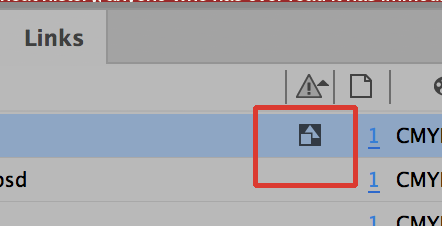
Copy link to clipboard
Copied
Looking at you screen capture, everything is silhouetted, you haven't let us know how that is being done. Is it a transparent background or a clipping path? The fact that you can export a 50MB PDF by flattening transparency, seems to indicate something's up with the transparency. Usually keeping transparency live makes a smaller PDF.
Find more inspiration, events, and resources on the new Adobe Community
Explore Now


